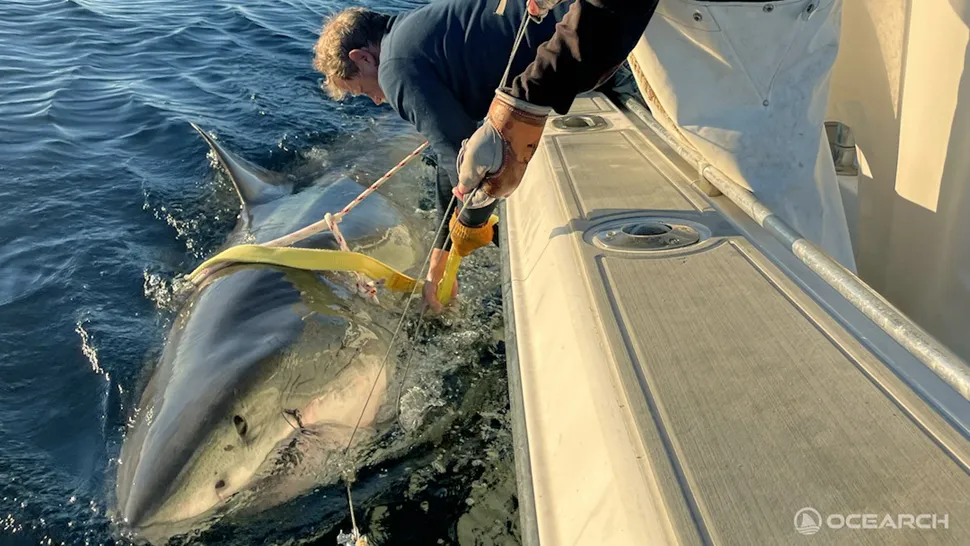Researchers have tagged a massive great white shark off the East Coast of the U.S., which they say is the largest male they’ve ever studied in the northwest Atlantic.
Named “Contender,” this shark measured 13 feet, 9 inches (4.2 meters) in length — about the size of a compact car — and weighed an estimated 1,653 pounds (750 kilograms).
The tagging took place on January 17, approximately 45 miles (70 kilometers) east of the Georgia-Florida border. OCEARCH, the non-profit responsible for the tagging, has since shared videos on social media showcasing the moment Contender was caught and released.
Contender is the largest male great white shark ever tagged and released by OCEARCH in the western North Atlantic region. The organization focuses on tagging white sharks that spend their winters off the southeastern United States.
Dr. Harley Newton, OCEARCH’s chief veterinarian and senior veterinary scientist, shared with Live Science that Contender was only the third adult white shark caught and sampled during the sharks’ winter residency. “Male white sharks mature around 26 years of age and about 11.5 feet [3.5 meters] long, so we were definitely excited to encounter an animal of his size, nearly 14 feet [4.3 meters],” Newton said.
While most shark length records are estimates and the largest figures are often disputed, mature males typically range between 11 and 13 feet (3.4 to 4 meters) in length, according to the Smithsonian National Museum of Natural History. This means Contender is about 9 inches (23 cm) longer than the typical large male of this species.
Female great whites, on the other hand, can grow to about 20 feet (6.1 meters) in length, far surpassing males. The largest reliably measured great white was 19 feet, 9 inches (6 meters), as reported by the Massachusetts Division of Marine Fisheries. However, unconfirmed reports suggest that some great whites may reach lengths of 23 feet (7 meters), according to the Florida Museum of Natural History.
Despite being far from the largest great white on record, Contender’s discovery is significant. Newton emphasized that it is rare for researchers to encounter adult white sharks of any sex, making Contender an important find for OCEARCH’s ongoing efforts to understand white sharks in the North Atlantic and improve conservation strategies.
“The elusiveness of these adult sharks may simply reflect that they spend time in deeper, offshore waters, away from the areas where active tagging is conducted,” Newton explained.
To track Contender’s movements, the research team attached a smart position and temperature transmitting (SPOT) tag to the shark’s first dorsal fin. This device sends signals to a satellite whenever the shark breaks the surface of the water, providing the shark’s location as well as data on its depth and water temperature.
Since being tagged on January 17, Contender has traveled approximately 290 miles (470 kilometers). The most recent data, recorded on February 10, placed him off the coast near Merritt Island, Florida, east of Orlando. OCEARCH describes him as “the ultimate ocean warrior” on their shark tracking website.
